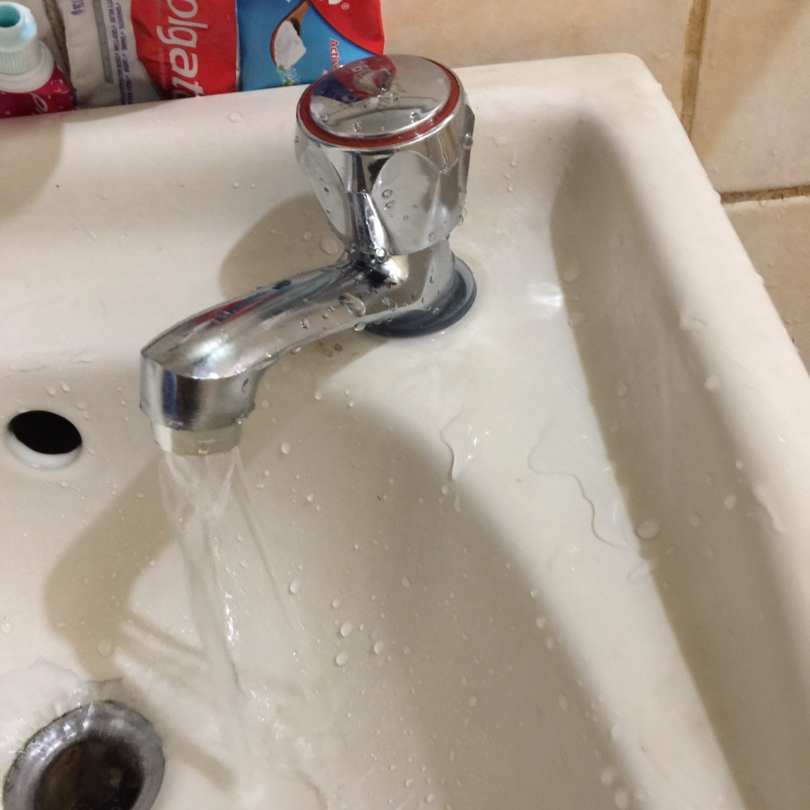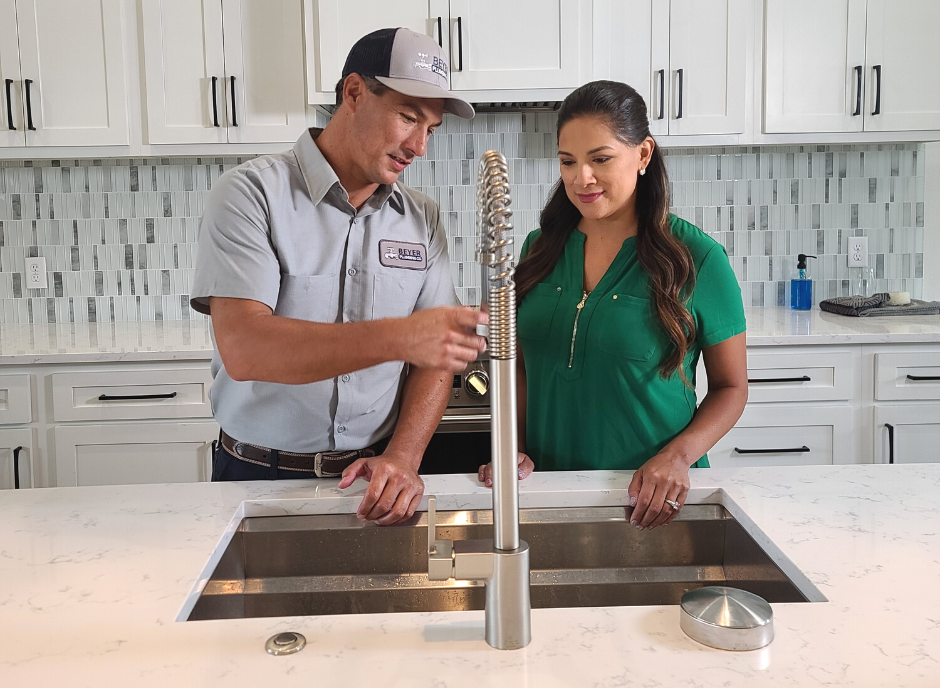Motives Why It's Critical to Rectify a Leaking Faucet
Motives Why It's Critical to Rectify a Leaking Faucet
Blog Article
How do you feel about Why It's Important to Fix Leaky Faucets?

Dripping taps might seem like a minor aggravation, but their impact goes beyond just the nuisance of the audio. From wasting water to sustaining unneeded financial costs and wellness threats, overlooking a leaking faucet can lead to different repercussions. In this article, we'll look into why it's vital to address this common family issue without delay and successfully.
Wastefulness of Water
Ecological Influence
Leaking faucets add substantially to water wastage. According to the Epa (EPA), a single tap leaking at one drip per secondly can waste greater than 3,000 gallons of water annually. This not just pressures water sources yet also affects ecosystems and wildlife depending on them.
Financial Costs
Boosted Water Costs
Beyond the environmental impact, leaking taps can blow up water expenses considerably. The accumulated wastage over time translates into higher utility expenses, which could have been avoided with timely repair services.
Prospective Property Damages
In addition, long term dripping can lead to harm to components and surfaces surrounding the tap. Water accumulation can create staining, corrosion, and also architectural issues if left neglected, resulting in added repair work costs.
Health and wellness Issues
Mold And Mildew and Mildew Development
The continuous visibility of wetness from a dripping tap creates a suitable environment for mold and mildew and mold growth. These fungis not only jeopardize indoor air top quality but likewise present health dangers, especially for individuals with respiratory system problems or allergies.
Waterborne Illness
Stationary water in trickling taps can become a breeding ground for germs and various other virus, increasing the threat of waterborne illness. Impurities such as Legionella germs thrive in stationary water, potentially leading to major diseases when consumed or breathed in.
Do it yourself vs. Specialist Repair work
Advantages and disadvantages of DIY Repair
While some may attempt to take care of a trickling tap themselves, DIY repairs come with their own collection of challenges. Without proper knowledge and devices, do it yourself efforts can intensify the concern or bring about incomplete repairs, extending the problem.
Benefits of Working With a Professional Plumber
Working with a professional plumber makes sure that the underlying cause of the leaking tap is attended to efficiently. Plumbers possess the expertise and devices to identify and repair tap concerns successfully, saving time and reducing the danger of additional damages.
Step-by-Step Overview to Dealing With a Dripping Tap
Devices Required
Before attempting to take care of a trickling tap, collect the needed devices, consisting of a flexible wrench, screwdrivers, substitute parts (such as washing machines or cartridges), and plumber's tape.
Common Tap Issues and Their Solutions
Recognize the kind of tap and the particular issue causing the drip. Usual troubles include worn-out washing machines, rusty valve seats, or faulty O-rings. Describe maker instructions or on-line tutorials for detailed advice on repair services.
Preventive Measures
Normal Maintenance Tips
To stop dripping faucets, execute regular upkeep such as cleaning up aerators, checking for leaks, and changing worn-out components promptly. Additionally, consider setting up water-saving devices or upgrading to a lot more effective fixtures.
Importance of Prompt Repair Works
Resolving dripping faucets as quickly as they're observed protects against further water wastage and prospective damage, eventually conserving both water and cash in the future.
Effect On Residential Or Commercial Property Value
Understanding of Well-Maintained Residential Property
Preserving a building in good condition, consisting of resolving upkeep issues like dripping taps, improves its viewed value and worth amongst prospective buyers or lessees.
Influence on Resale Value
Properties with properly maintained plumbing fixtures, consisting of faucets, command higher resale worths in the real estate market. Resolving dripping faucets can add to a positive perception during residential property evaluations and negotiations.
Ecological Responsibility
Private Contribution to Conservation
Taking responsibility for dealing with leaking faucets straightens with more comprehensive initiatives toward water preservation and environmental sustainability. Every individual's actions jointly make a considerable influence on preserving priceless sources.
Sustainable Living Practices
By prioritizing timely repair services and embracing water-saving routines, people add to sustainable living techniques that profit both present and future generations.
Verdict
Attending to a trickling tap goes beyond plain benefit; it's a vital action toward preserving water, decreasing monetary prices, and protecting wellness and building. Whether through do it yourself repairs or expert aid, taking action to deal with leaking faucets is a tiny yet impactful way to promote accountable stewardship of resources and add to a healthier, a lot more lasting future.
How to Fix a Dripping or Leaky Faucet
A leaking faucet is one of the most common problems that homeowners encounter, but it being commonplace doesn’t make it any less annoying. The constant drip drip drip of a leaking bathtub faucet, showerhead, or sink tap can disturb your home’s serenity. Left neglected, a dripping faucet can also result in higher water bills and discoloration or mold growth in your sink or plumbing fixtures.
Fortunately, you don’t have to be a trained plumber to know how to stop a dripping faucet. With some basic tools, replacement parts, and a little patience, leaky faucet repair is a breeze. In this article, we’ll explain what causes dripping faucets and how you can fix them.
What Causes a Leaking Faucet?
Kitchen and bathroom faucets come in all manner of designs, but most involve some combination of valves, O-rings, seals, and washers. The O-ring is usually the weakest link, but any one of these pieces can wear down over time. Heat, moisture, temperature fluctuations, minerals, mold, and movement can contribute to warping and corrosion, breaking the watertight seal. This just comes with the territory of being a homeowner. Everything is always subject to wear and tear, and some component parts of your appliances and fixtures need to be replaced on occasion. At least replacement O-rings are cheap!
More rarely, dripping faucets can be a symptom of excessively high water pressure. Were this the case in your home, you would probably notice that the leak is not isolated to one faucet. Water pressure issues are harder to resolve on your own. We recommend contacting a professional plumber if you suspect your water pressure is too high.
How to Fix a Dripping Faucet
Pipe wrench or monkey wrench Allen wrench set Screwdrivers Old towel or rag Shut off the water.
Before you do anything, you need to turn off the water to keep from drenching your kitchen or bathroom. You should find a valve under the sink and against the wall. Once you’ve turned this valve, try turning the faucet on to confirm that the water source has been cut off.
If you can’t locate your local valve for the faucet you’re working on, you can always shut off the water to the house at the main valve. Of course, this will prohibit anyone from using the sinks, showers, or toilets while you’re working on the faucet that’s giving you trouble.
Plug or block the drain.
You’ll be disassembling the faucet and removing some small bits of hardware. Plug the drain with a stopper or rag to avoid the possibility of a small screw falling into your P-trap.
Take apart the faucet assembly.
There are several varieties of kitchen and bathroom faucets, each with its own manner of assembly. For detailed instructions on how to disassemble your faucet, you can refer to the fixture’s manual or contact the manufacturer. If you know whether you have a ball, disc, cartridge, or compression faucet, you can find detailed schematics online.
In general, you need to begin by removing the faucet handles. You might notice a small screw that you’ll need to remove with a screwdriver or Allen wrench. If you don’t see any visible securing hardware, it’s likely hidden under a decorative cap that can be unscrewed or popped off with flathead screwdriver.
Remove each piece methodically, consulting a schematic when necessary. Take notes or arrange the pieces in such a way to make it easier to correctly reassemble the faucet later.
Remove the cartridge.
Once you’ve removed the handles and securing hardware, you should be able to remove the valve cartridge or stem. Some cartridges will slide right out. Other faucet models will require you to loosen a nut with a pipe wrench before you can remove the valve stem.
Examine the exposed hardware.
With the cartridge or stem removed, inspect the component parts. Check the rubber O-rings for wear and tear. Also examine the seat washer for corrosion or other damage. These pieces are usually the responsible parties for a dripping faucet, but it’s worth inspecting the other component parts while you have the faucet disassembled.
Find replacement parts.
Once you’ve identified which faucet component has failed, find an identical replacement. Your local hardware store should have O-rings, seat washers, and other standard components in stock. If you have a luxury or uncommon faucet, you may have to contact the manufacturer for a replacement part.
It’s a good idea to take your old parts with you to the hardware store so you can compare them with the store’s inventory and be sure you’re purchasing the correct replacement.
Reassemble the faucet.
With your new parts in hand, reconstruct the faucet and handles. Don’t be tempted to overtighten screws or nuts. You might think this could create a better seal, but it can instead damage or bend a delicate part of the assembly and create a new problem for you.
Turn on the water and test the faucet.
The only thing left to do is test your work. Unplug the sink, turn the water back on, and try the faucet. Congratulate yourself on a job well done!
https://www.libertyhomeguard.com/how-to-fix-a-dripping-or-leaky-faucet/

Hopefully you enjoyed reading our section about Should I Repair or Replace a Leaky Faucet?. Thanks for taking time to browse our posting. Kindly set aside a second to promote this post if you liked it. I love your readership.
Report this page